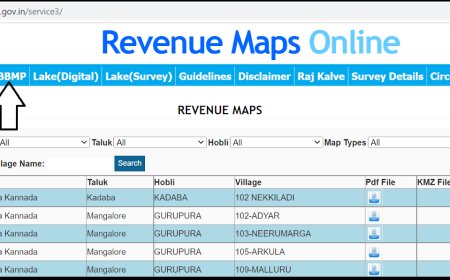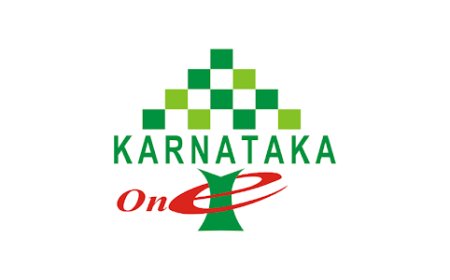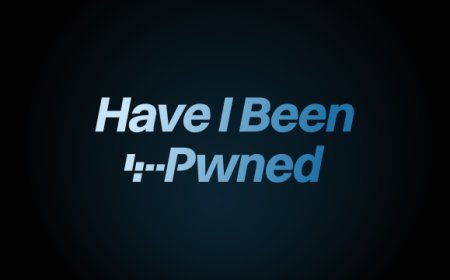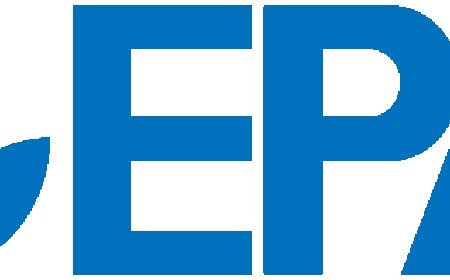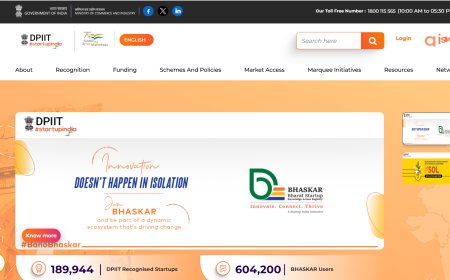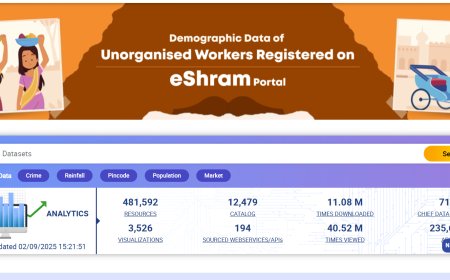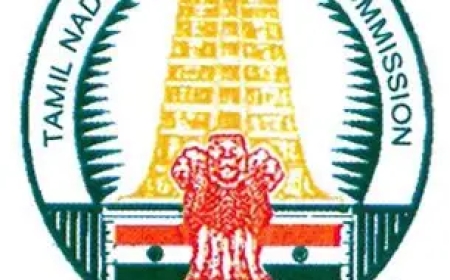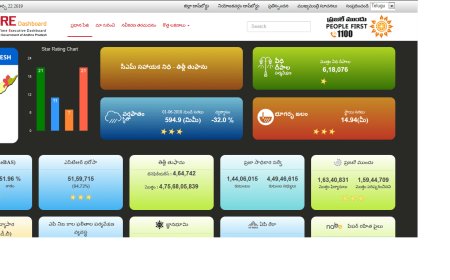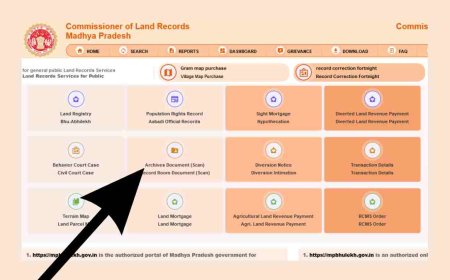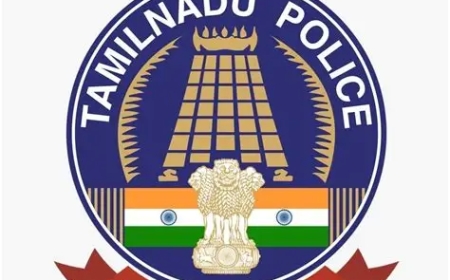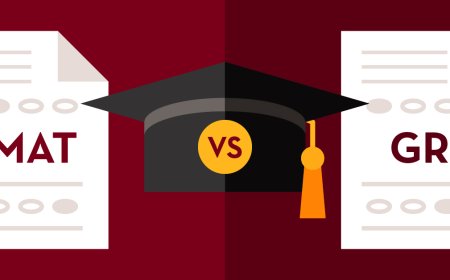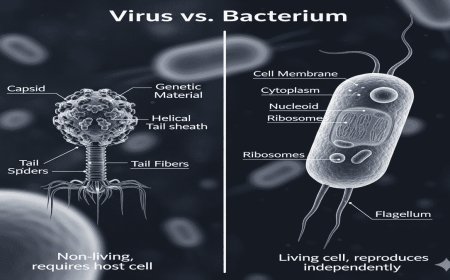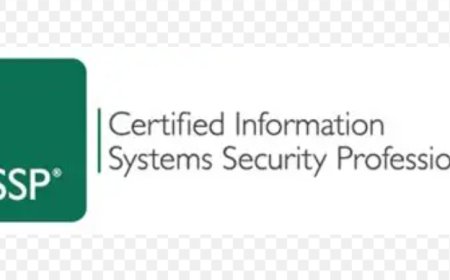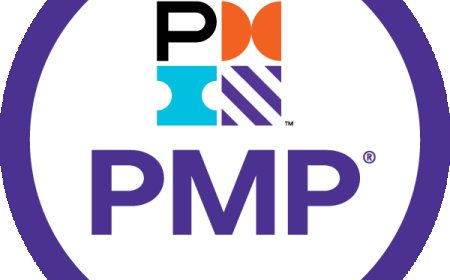Latest CompTIA Security+ SY0-701 Exam Questions and Answers – Study Online
Studying for the Security+ SY0-701 exam? Access the latest CompTIA Security+ questions and answers online. Learn and prep smarter—start now!
Latest CompTIA Security+ SY0-701 Exam Questions and Answers – Study Online
NEW QUESTION 1
- (Exam Topic 1)
A security analyst needs to implement an MDM solution for BYOD users that will allow the company to retain control over company emails residing on the devices and limit data exfiltration that might occur if the devices are lost or stolen.Which of the following would BEST meet these requirements? (Select TWO).
A. Full-device encryption
B. Network usage rules
C. Geofencing
D. Containerization
E. Application whitelisting
F. Remote control
Answer: DE
Explanation:
MDM solutions emerged to solve problems created by BYOD. With MDM, IT teams can remotely wipe devices clean if they are lost or stolen. MDM also makes the life of an IT administrator a lot easier as it allows them to enforce corporate policies, apply software updates, and even ensure that password protection is used on each device. Containerization and application whitelisting are two features of MDM that can help retain control over company emails residing on the devices and limit data exfiltration that might occur if the devices are lost or stolen.
Containerization is a technique that creates a separate and secure space on the device for work-related data and applications. This way, personal and corporate data are isolated from each other, and IT admins can manage only the work container without affecting the user’s privacy. Containerization also allows IT admins to remotely wipe only the work container if needed, leaving the personal data intact.
Application whitelisting is a technique that allows only authorized applications to run on the device. This way, IT admins can prevent users from installing or using malicious or unapproved applications that might compromise the security of corporate data. Application whitelisting also allows IT admins to control which applications can access corporate resources, such as email servers or cloud storage.
References: https://www.comptia.org/certifications/security#examdetails https://www.comptia.org/content/guides/comptia-security-sy0-601-exam-objectives https://www.office1.com/blog/byod-vs-mdm
NEW QUESTION 2
- (Exam Topic 1)
Which of the following is a cryptographic concept that operates on a fixed length of bits?
A. Block cipher
B. Hashing
C. Key stretching
D. Salting
Answer: A
Explanation:
Single-key or symmetric-key encryption algorithms create a fixed length of bits known as a block cipher with a secret key that the creator/sender uses to encipher data (encryption) and the receiver uses to decipher it.
NEW QUESTION 3
- (Exam Topic 1)
A company Is planning to install a guest wireless network so visitors will be able to access the Internet. The stakeholders want the network to be easy to connect to so time is not wasted during meetings. The WAPs are configured so that power levels and antennas cover only the conference rooms where visitors will attend meetings. Which of the following would BEST protect the company's Internal wireless network against visitors accessing company resources?
A. Configure the guest wireless network to be on a separate VLAN from the company's internal wireless network
B. Change the password for the guest wireless network every month.
C. Decrease the power levels of the access points for the guest wireless network.
D. Enable WPA2 using 802.1X for logging on to the guest wireless network.
Answer: A
Explanation:
Configuring the guest wireless network on a separate VLAN from the company's internal wireless network will prevent visitors from accessing company resources. References: CompTIA Security+ Study Guide: Exam SY0-601, Chapter 4
NEW QUESTION 4
- (Exam Topic 1)
If a current private key is compromised, which of the following would ensure it cannot be used to decrypt ail historical data?
A. Perfect forward secrecy
B. Elliptic-curve cryptography
C. Key stretching
D. Homomorphic encryption
Answer: A
Explanation:
Perfect forward secrecy would ensure that it cannot be used to decrypt all historical data. Perfect forward secrecy (PFS) is a security protocol that generates a unique session key for each session between two parties. This ensures that even if one session key is compromised, it cannot be used to decrypt other sessions.
NEW QUESTION 5
- (Exam Topic 1)
As part of annual audit requirements, the security team performed a review of exceptions to the company policy that allows specific users the ability to use USB storage devices on their laptops The review yielded the following results.
• The exception process and policy have been correctly followed by the majority of users
• A small number of users did not create tickets for the requests but were granted access
• All access had been approved by supervisors.
• Valid requests for the access sporadically occurred across multiple departments.
• Access, in most cases, had not been removed when it was no longer needed
Which of the following should the company do to ensure that appropriate access is not disrupted but unneeded access is removed in a reasonable time frame?
A. Create an automated, monthly attestation process that removes access if an employee's supervisor denies the approval
B. Remove access for all employees and only allow new access to be granted if the employee's supervisor approves the request
C. Perform a quarterly audit of all user accounts that have been granted access and verify the exceptions with the management team
D. Implement a ticketing system that tracks each request and generates reports listing which employees actively use USB storage devices
Answer: A
Explanation:
According to the CompTIA Security+ SY0-601 documents, the correct answer option is A. Create an automated, monthly attestation process that removes access if an employee’s supervisor denies the approval12.
This option ensures that appropriate access is not disrupted but unneeded access is removed in a reasonable time frame by requiring supervisors to approve or deny the exceptions on a regular basis. It also reduces the manual workload of the security team and improves the compliance with the company policy.
NEW QUESTION 6
- (Exam Topic 1)
A store receives reports that shoppers’ credit card information is being stolen. Upon further analysis, those same shoppers also withdrew money from an ATM in that store.
The attackers are using the targeted shoppers’ credit card information to make online purchases. Which of the following attacks is the MOST probable cause?
A. Identity theft
B. RFID cloning
C. Shoulder surfing
D. Card skimming
Answer: D
Explanation:
The attackers are using card skimming to steal shoppers' credit card information, which they use to make online purchases. References: CompTIA Security+ Study Guide Exam SY0-601, Chapter 5
NEW QUESTION 7
- (Exam Topic 1)
A retail company that is launching @ new website to showcase the company’s product line and other information for online shoppers registered the following URLs:
* www companysite com
* shop companysite com
* about-us companysite com contact-us. companysite com secure-logon company site com
Which of the following should the company use to secure its website if the company is concerned with convenience and cost?
A. A self-signed certificate
B. A root certificate
C. A code-signing certificate
D. A wildcard certificate
E. An extended validation certificate
Answer: D
Explanation:
The company can use a wildcard certificate to secure its website if it is concerned with convenience and cost. A wildcard certificate can secure multiple subdomains, which makes it cost-effective and convenient for securing the various registered domains.
The retail company should use a wildcard certificate if it is concerned with convenience and c1o2s.tA wildcard SSL certificate is a single SSL/TLS certificate that can provide significant time and cost savings, particularly for small businesses. The certificate includes a wildcard character (*) in the domain name field, and can secure multiple subdomains of the primary domain1
NEW QUESTION 8
- (Exam Topic 1)
Which of the following environments would MOST likely be used to assess the execution of component parts of a system at both the hardware and software levels and to measure performance characteristics?
A. Test
B. Staging
C. Development
D. Production
Answer: A
Explanation:
The test environment is used to assess the execution of component parts of a system at both the hardware and software levels and to measure performance characteristics. References: CompTIA Security+ Study Guide 601, Chapter 2
NEW QUESTION 9
- (Exam Topic 1)
A network engineer and a security engineer are discussing ways to monitor network operations. Which of the following is the BEST method?
A. Disable Telnet and force SSH.
B. Establish a continuous ping.
C. Utilize an agentless monitor
D. Enable SNMPv3 With passwords.
Answer: C
Explanation:
An agentless monitor is the best method to monitor network operations because it does not require any software or agents to be installed on the devices being monitored, making it less intrusive and less likely to disrupt network operations. This method can monitor various aspects of network operations, such as traffic, performance, and security.
CompTIA Security+ Study Guide, Sixth Edition (SY0-601), Chapter 4: Attacks, Threats, and Vulnerabilities, Monitoring and Detection Techniques, pg. 167-170.
NEW QUESTION 10
- (Exam Topic 1)
A Chief Information Officer is concerned about employees using company-issued laptops lo steal data when accessing network shares. Which of the following should the company Implement?
A. DLP
B. CASB
C. HIDS
D. EDR
E. UEFI
Answer: A
Explanation:
The company should implement Data Loss Prevention (DLP) to prevent employees from stealing data when accessing network shares. References: CompTIA Security+ Study Guide Exam SY0-601, Chapter 8
NEW QUESTION 10
- (Exam Topic 1)
Developers are writing code and merging it into shared repositories several times a day, where it is tested automatically. Which of the following concepts does this BEST represent?
A. Functional testing
B. Stored procedures
C. Elasticity
D. Continuous integration
Answer: D
Explanation:
Continuous integration is a software development practice where developers merge their code into a shared repository several times a day, and the code is tested automatically. This ensures that code changes are tested and integrated continuously, reducing the risk of errors and conflicts.
NEW QUESTION 14
- (Exam Topic 1)
A Chief Information Officer is concerned about employees using company-issued laptops to steal data when accessing network shares. Which of the following should the company implement?
A. DLP
B. CASB
C. HIDS
D. EDR
E. UEFI
Answer: A
Explanation:
The company should implement Data Loss Prevention (DLP) to prevent employees from stealing data. References: CompTIA Security+ Study Guide: Exam SY0-601, Chapter 8
NEW QUESTION 17
- (Exam Topic 1)
A security administrator wants to implement a program that tests a user's ability to recognize attacks over the organization's email system Which of the following would be BEST suited for this task?
A. Social media analysis
B. Annual information security training
C. Gamification
D. Phishing campaign
Answer: D
Explanation:
A phishing campaign is a simulated attack that tests a user's ability to recognize attacks over the organization's email system. Phishing campaigns can be used to train users on how to identify and report suspicious emails.
References: CompTIA Security+ Study Guide, Exam SY0-601, 4th Edition, Chapter 2: Technologies and Tools, pp. 85-86.
NEW QUESTION 21
- (Exam Topic 1)
A company recently decided to allow its employees to use their personally owned devices for tasks like checking email and messaging via mobile applications. The company would like to use MDM, but employees are concerned about the loss of personal data. Which of the following should the IT department implement to BEST protect the company against company data loss while still addressing the employees’ concerns?
A. Enable the remote-wiping option in the MDM software in case the phone is stolen.
B. Configure the MDM software to enforce the use of PINs to access the phone.
C. Configure MDM for FDE without enabling the lock screen.
D. Perform a factory reset on the phone before installing the company's applications.
Answer: C
Explanation:
MDM software is a type of remote asset-management software that runs from a central server. It is used by businesses to optimize the functionality and security of their mobile devices, including smartphones and tablets. It can monitor and regulate both corporate-owned and personally owned devices to the organization’s policies.
FDE stands for full disk encryption, which is a method of encrypting all data on a device’s storage. FDE can protect data from unauthorized access in case the device is lost or stolen.
If a company decides to allow its employees to use their personally owned devices for work tasks, it should configure MDM software to enforce FDE on those devices. This way, the company can protect its data from being exposed if the device falls into the wrong hands.
However, employees may be concerned about the loss of personal data if the company also enables the remote-wiping option in the MDM software. Remote wiping is a feature that allows the company to erase all data on a device remotely in case of theft or loss. Remote wiping can also affect personal data on the device, which may not be acceptable to employees.
![]() Therefore, a possible compromise is to configure MDM for FDE without enabling the lock screen. This means that the device will be encrypted, but it will not require a password or PIN to unlock it. This way, employees can access their personal data easily, while the company can still protect its data with encryption. The other options are not correct because:
Therefore, a possible compromise is to configure MDM for FDE without enabling the lock screen. This means that the device will be encrypted, but it will not require a password or PIN to unlock it. This way, employees can access their personal data easily, while the company can still protect its data with encryption. The other options are not correct because:
![]() A. Enable the remote-wiping option in the MDM software in case the phone is stolen. This option may address the company’s concern about data loss, but it may not address the employees’ concern about personal data loss. Remote wiping can erase both work and personal data on the device, which may not be desirable for employees.
A. Enable the remote-wiping option in the MDM software in case the phone is stolen. This option may address the company’s concern about data loss, but it may not address the employees’ concern about personal data loss. Remote wiping can erase both work and personal data on the device, which may not be desirable for employees.
![]() B. Configure the MDM software to enforce the use of PINs to access the phone. This option may enhance the security of the device, but it may not address the company’s concern about data loss. PINs can be guessed or bypassed by attackers, and they do not protect data if the device is physically accessed.
B. Configure the MDM software to enforce the use of PINs to access the phone. This option may enhance the security of the device, but it may not address the company’s concern about data loss. PINs can be guessed or bypassed by attackers, and they do not protect data if the device is physically accessed.
D. Perform a factory reset on the phone before installing the company’s applications. This option may address the company’s concern about data loss, but it may not address the employees’ concern about personal data loss. A factory reset will erase all data on the device, including personal data, which may not be acceptable to employees.
According to CompTIA Security+ SY0-601 Exam Objectives 2.4 Given a scenario, implement secure systems design:
“MDM software is a type of remote asset-management software that runs from a central server1. It is used by businesses to optimize the functionality and security of their mobile devices, including smartphones and tablets2.”
“FDE stands for full disk encryption, which is a method of encrypting all data on a device’s storage3.” References: https://www.comptia.org/certifications/security#examdetails
https://www.comptia.org/content/guides/comptia-security-sy0-601-exam-objectives https://www.makeuseof.com/what-is-mobile-device-management-mdm-software/
NEW QUESTION 26
- (Exam Topic 1)
A security researcher has alerted an organization that its sensitive user data was found for sale on a website. Which of the following should the organization use to inform the affected parties?
A. A An incident response plan
B. A communications plan
C. A business continuity plan
D. A disaster recovery plan
Answer: B
Explanation:
The organization should use a communications plan to inform the affected parties. A communications plan is a document that outlines how an organization will communicate with internal and external stakeholders during a crisis or incident. It should include details such as who will be responsible for communicating with different stakeholders, what channels will be used to communicate, and what messages will be communicated.
An incident response plan is a document that outlines the steps an organization will take to respond to a security incident or data breach. A business continuity plan is a document that outlines how an organization will continue to operate during and after a disruption. A disaster recovery plan is a document that outlines how an organization will recover its IT infrastructure and data after a disaster.
NEW QUESTION 31
- (Exam Topic 1)
A help desk technician receives an email from the Chief Information Officer (C/O) asking for documents. The technician knows the CIO is on vacation for a few weeks. Which of the following should the technician do to validate the authenticity of the email?
A. Check the metadata in the email header of the received path in reverse order to follow the email’s path.
B. Hover the mouse over the CIO's email address to verify the email address.
C. Look at the metadata in the email header and verify the "From." line matches the CIO's email address.
D. Forward the email to the CIO and ask if the CIO sent the email requesting the documents.
Answer: B
Explanation:
The “From” line in the email header can be easily spoofed or manipulated by an attacker to make it look like the email is coming from the CIO’s email address. However, this does not mean that the email address is actually valid or that the email is actually sent by the CIO. A better way to check the email address is to hover over it and see if it matches the CIO’s email address exactly. This can help to spot any discrepancies or typos that might indicate a phishing attempt. For example, if the CIO’s email address is cio@company.com, but when you hover over it, it shows cio@compnay.com, then you know that the email is not authentic and likely a phishing attempt.
NEW QUESTION 34
- (Exam Topic 1)
Which of the following is a physical security control that ensures only the authorized user is present when gaining access to a secured area?
A. A biometric scanner
B. A smart card reader
C. APKItoken
D. A PIN pad
Answer: A
Explanation:
A biometric scanner uses physical characteristics such as fingerprints to identify an individual user. It is used to ensure that only the authorized user is present when gaining access to a secured area.
NEW QUESTION 39
- (Exam Topic 1)
A security analyst was deploying a new website and found a connection attempting to authenticate on the site's portal. While Investigating The incident, the analyst identified the following Input in the username field:
Which of the following BEST explains this type of attack?
A. DLL injection to hijack administrator services
B. SQLi on the field to bypass authentication
C. Execution of a stored XSS on the website
D. Code to execute a race condition on the server
Answer: B
Explanation:
The input "admin' or 1=1--" in the username field is an example of SQL injection (SQLi) attack. In this case, the attacker is attempting to bypass authentication by injecting SQL code into the username field that will cause the authentication check to always return true. References: CompTIA Security+ SY0-601 Exam Objectives: 3.1 Given a scenario, use appropriate software tools to assess the security posture of an organization.
NEW QUESTION 41
- (Exam Topic 1)
 |
The following are the logs of a successful attack.
Which of the following controls would be BEST to use to prevent such a breach in the future?
A. Password history
B. Account expiration
C. Password complexity
D. Account lockout
Answer: C
Explanation:
To prevent such a breach in the future, the BEST control to use would be Password complexity.
Password complexity is a security measure that requires users to create strong passwords that are difficult to guess or crack. It can help prevent unauthorized access to systems and data by making it more difficult for attackers to guess or crack passwords.
The best control to use to prevent a breach like the one shown in the logs is password complexity. Password complexity requires users to create passwords that are harder to guess, by including a mix of upper and lowercase letters, numbers, and special characters. In the logs, the attacker was able to guess the user's password using a dictionary attack, which means that the password was not complex enough. References:
CompTIA Security+ Certification Exam Objectives - Exam SY0-601
NEW QUESTION 46
- (Exam Topic 1)
A security administrator has discovered that workstations on the LAN are becoming infected with malware.
The cause of the infections appears to be users receiving phishing emails that are bypassing the current
email-filtering technology. As a result, users are being tricked into clicking on malicious URLs, as no internal controls currently exist in the environment to evaluate their safety. Which of the following would be BEST to implement to address the issue?
A. Forward proxy
B. HIDS
C. Awareness training
D. A jump server
E. IPS
Answer: C
Explanation:
Awareness training should be implemented to educate users on the risks of clicking on malicious URLs. References: CompTIA Security+ Study Guide: Exam SY0-601, Chapter 9
NEW QUESTION 48
- (Exam Topic 1)
Which of the following BEST describes a technique that compensates researchers for finding vulnerabilities?
A. Penetration testing
B. Code review
C. Wardriving
D. Bug bounty
Answer: D
Explanation:
A bug bounty is a technique that compensates researchers for finding vulnerabilities in software or systems. A bug bounty program is an initiative that offers rewards, usually monetary, to ethical hackers who report security flaws to the owners or developers of the software or system. Bug bounty programs are often used by companies such as Meta (formerly Facebook), Google, Microsoft, and others to improve the security of their products and services
Bug bounty programs compensate researchers, often financially, for finding vulnerabilities in software, websites, or other technology. These programs provide an additional layer of security testing and incentivize researchers to report vulnerabilities instead of exploiting them.
NEW QUESTION 49
- (Exam Topic 1)
As part of the building process for a web application, the compliance team requires that all PKI certificates are rotated annually and can only contain wildcards at the secondary subdomain level. Which of the following certificate properties will meet these requirements?
A. HTTPS://.comptia.org, Valid from April 10 00:00:00 2021 - April 8 12:00:00 2022
B. HTTPS://app1.comptia.org, Valid from April 10 00:00:00 2021-April 8 12:00:00 2022
C. HTTPS:// app1.comptia.org, Valid from April 10 00:00:00 2021-April 8 12:00:00 2022
D. HTTPS://.comptia.org, Valid from April 10 00:00:00 2021 - April 8 12:00:00
Answer: A
Explanation:
PKI certificates are digital certificates that use public key infrastructure (PKI) to verify the identity and authenticity of a sender and a receiver of data1. PKI certificates can be used to secure web applications with HTTPS, which is a protocol that encrypts and protects the data transmitted over the internet1.
One of the properties of PKI certificates is the domain name, which is the name of the website or web application that the certificate is issued for2. The domain name can be either a specific name, such as app1.comptia.org, or a wildcard name, such as *.comptia.org2. A wildcard name means that the certificate can be used with multiple subdomains of a domain, such as payment.comptia.org or contact.comptia.org2.
Another property of PKI certificates is the validity period, which is the time span during which the certificate is valid and can be used3. The validity period is determined by the certificate authority (CA) that issues the certificate, and it usually ranges from one to three years3. The validity period can be checked by looking at the valid from and valid to dates on the certificate3.
Based on these properties, the certificate that will meet the requirements of rotating annually and only containing wildcards at the secondary subdomain level is A. HTTPS://*.comptia.org, Valid from April 10 00:00:00 2021 - April 8 12:00:00 2022. This certificate has a wildcard character (*) at the secondary subdomain level, which means it can be used with any subdomain of comptia.org2. It also has a validity period of one year, which means it needs to be rotated annually3.
NEW QUESTION 54
- (Exam Topic 1)
A new plug-and-play storage device was installed on a PC in the corporate environment. Which of the following safeguards will BEST help to protect the PC from malicious files on the storage device?
A. Change the default settings on the PC.
B. Define the PC firewall rules to limit access.
C. Encrypt the disk on the storage device.
D. Plug the storage device in to the UPS
Answer: A
Explanation:
The best option that will help to protect the PC from malicious files on the storage device would be A. Change the default settings on the PC. Changing the default settings on the PC can include disabling the autorun or autoplay feature, which can prevent malicious files from executing automatically when the storage device is plugged in. Changing the default settings can also include enabling antivirus software, updating the operating system and applications, and configuring user account control and permissions.
NEW QUESTION 57
- (Exam Topic 1)
An organization discovered a disgruntled employee exfiltrated a large amount of PII data by uploading files Which of the following controls should the organization consider to mitigate this risk?
A. EDR
B. Firewall
C. HIPS
D. DLP
Answer: D
Explanation:
DLP stands for data loss prevention, which is a set of tools and processes that aim to prevent unauthorized access, use, or transfer of sensitive data. DLP can help mitigate the risk of data exfiltration by disgruntled employees or external attackers by monitoring and controlling data flows across endpoints, networks, and cloud services. DLP can also detect and block attempts to copy, print, email, upload, or download sensitive data based on predefined policies and rules.
References: https://www.comptia.org/certifications/security#examdetails https://www.comptia.org/content/guides/comptia-security-sy0-601-exam-objectives https://www.forcepoint.com/cyber-edu/data-loss-prevention-dlp
NEW QUESTION 62
- (Exam Topic 1)
A company acquired several other small companies The company thai acquired the others is transitioning network services to the cloud The company wants to make sure that performance and security remain intact Which of the following BEST meets both requirements?
A. High availability
B. Application security
C. Segmentation
D. Integration and auditing
Answer: A
Explanation:
High availability refers to the ability of a system or service to remain operational and available to users with minimal downtime. By ensuring high availability, the company can maintain good performance and ensure that users have access to the network services they need. High availability can also improve security, as it helps to prevent disruptions that could potentially be caused by security incidents or other issues.
NEW QUESTION 64
- (Exam Topic 1)
A bad actor tries to persuade someone to provide financial information over the phone in order to gain access to funds. Which of the following types of attacks does this scenario describe?
A. Vishing
B. Phishing
C. Spear phishing
D. Whaling
Answer: A
Explanation:
Vishing is a social engineering attack that uses phone calls or voicemail messages to trick people into divulging sensitive information, such as financial information or login credentials.
NEW QUESTION 68
- (Exam Topic 1)
A company installed several crosscut shredders as part of increased information security practices targeting data leakage risks. Which of the following will this practice reduce?
A. Dumpster diving
B. Shoulder surfing
C. Information elicitation
D. Credential harvesting
Answer: A
Explanation:
Crosscut shredders are used to destroy paper documents and reduce the risk of data leakage through dumpster diving. Dumpster diving is a method of retrieving sensitive information from paper waste by searching through discarded documents.
References:
CompTIA Security+ Study Guide, Exam SY0-601, 4th Edition, Chapter 2
NEW QUESTION 69
- (Exam Topic 1)
An organization wants to integrate its incident response processes into a workflow with automated decision points and actions based on predefined playbooks. Which of the following should the organization implement?
A. SIEM
B. SOAR
C. EDR
D. CASB
Answer: B
Explanation:
Security Orchestration, Automation, and Response (SOAR) should be implemented to integrate incident response processes into a workflow with automated
decision points and actions based on predefined playbooks. References: CompTIA Security+ Study Guide, Exam SY0-601, Chapter 9
NEW QUESTION 74
- (Exam Topic 1)
An enterprise needs to keep cryptographic keys in a safe manner. Which of the following network appliances can achieve this goal?
A. HSM
B. CASB
C. TPM
D. DLP
Answer: A
Explanation:
Hardware Security Module (HSM) is a network appliance designed to securely store cryptographic keys and perform cryptographic operations. HSMs provide a secure environment for key management and can be used to keep cryptographic keys safe from theft, loss, or unauthorized access. Therefore, an enterprise can achieve the goal of keeping cryptographic keys in a safe manner by using an HSM appliance. References: CompTIA Security+ Certification Exam Objectives, Exam Domain 2.0: Technologies and Tools, 2.4 Given a scenario, use appropriate tools and techniques to troubleshoot security issues, p. 21
NEW QUESTION 75
- (Exam Topic 1)
Which of the following BEST describes the method a security analyst would use to confirm a file that is downloaded from a trusted security website is not altered in transit or corrupted using a verified checksum?
A. Hashing
B. Salting
C. Integrity
D. Digital signature
Answer: A
Explanation:
Hashing is a cryptographic function that produces a unique fixed-size output (i.e., hash value) from an input (i.e., data). The hash value is a digital fingerprint of the data, which means that if the data changes, so too does the hash value. By comparing the hash value of the downloaded file with the hash value provided by the security website, the security analyst can verify that the file has not been altered in transit or corrupted.
NEW QUESTION 77
- (Exam Topic 1)
Which of the following environments typically hosts the current version configurations and code, compares user-story responses and workflow, and uses a modified version of actual data for testing?
A. Development
B. Staging
C. Production
D. Test
Answer: B
Explanation:
Staging is an environment in the software development lifecycle that is used to test a modified version of the actual data, current version configurations, and code. This environment compares user-story responses and workflow before the software is released to the production environment. References: CompTIA Security+ Study Guide, Sixth Edition, Sybex, pg. 496
NEW QUESTION 81
- (Exam Topic 1)
A systems engineer is building a new system for production. Which of the following is the FINAL step to be performed prior to promoting to production?
A. Disable unneeded services.
B. Install the latest security patches.
C. Run a vulnerability scan.
D. Encrypt all disks.
Answer: C
Explanation:
Running a vulnerability scan is the final step to be performed prior to promoting a system to production. This allows any remaining security issues to be identified and resolved before the system is put into production. References: CompTIA Security+ Study Guide, Exam SY0-601, 4th Edition, Chapter 3
NEW QUESTION 84
- (Exam Topic 1)
During a forensic investigation, a security analyst discovered that the following command was run on a compromised host:
Which of the following attacks occurred?
A. Buffer overflow
B. Pass the hash
C. SQL injection
D. Replay attack
Answer: B
Explanation:
Pass the hash is an attack technique that allows an attacker to authenticate to a remote server or service by using the hashed version of a user’s password, rather than requiring the plaintext password
NEW QUESTION 89
- (Exam Topic 1)
A security engineer needs to build @ solution to satisfy regulatory requirements that stale certain critical servers must be accessed using MFA However, the critical servers are older and are unable to support the addition of MFA, Which of te following will the engineer MOST likely use to achieve this objective?
A. A forward proxy
B. A stateful firewall
C. A jump server
D. A port tap
Answer: C
Explanation:
A jump server is a secure host that allows users to access other servers within a network. The jump server acts as an intermediary, and users can access other servers via the jump server after authenticating with MFA.
NEW QUESTION 92
- (Exam Topic 1)
A client sent several inquiries to a project manager about the delinquent delivery status of some critical reports. The project manager claimed the reports were previously sent via email, but then quickly generated and backdated the reports before submitting them as plain text within the body of a new email message thread. Which of the following actions MOST likely supports an investigation for fraudulent submission?
A. Establish chain of custody.
B. Inspect the file metadata.
C. Reference the data retention policy.
D. Review the email event logs
Answer: D
Explanation:
Reviewing the email event logs can support an investigation for fraudulent submission, as these logs can provide details about the history of emails, including the message content, timestamps, and sender/receiver information. Reference: CompTIA Security+ Certification Exam Objectives, Exam SY0-601, 3.2 Given a scenario, implement appropriate data security and privacy controls.
NEW QUESTION 97
- (Exam Topic 1)
Which of the following BEST describes the team that acts as a referee during a penetration-testing exercise?
A. White team
B. Purple team
C. Green team
D. Blue team
E. Red team
Answer: A
Explanation:
During a penetration testing exercise, the white team is responsible for acting as a referee and providing oversight and support to ensure that the testing is conducted safely and effectively. They may also be responsible for determining the rules and guidelines of the exercise, monitoring the progress of the teams, and providing feedback and insights on the strengths and weaknesses of the organization's security measures.
NEW QUESTION 98
- (Exam Topic 1)
Ann, a customer, received a notification from her mortgage company stating her PII may be shared with partners, affiliates, and associates to maintain day-to-day business operations.
Which of the following documents did Ann receive?
A. An annual privacy notice
B. A non-disclosure agreement
C. A privileged-user agreement
D. A memorandum of understanding
Answer: A
Explanation:
Ann received an annual privacy notice from her mortgage company. An annual privacy notice is a statement from a financial institution or creditor that outlines the institution's privacy policy and explains how the institution collects, uses, and shares customers' personal information. It informs the customer about their rights under the Gramm-Leach-Bliley Act (GLBA) and the institution's practices for protecting their personal information. References:
CompTIA Security+ Certification Exam Objectives - Exam SY0-601
NEW QUESTION 101
- (Exam Topic 1)
A security researcher is using an adversary's infrastructure and TTPs and creating a named group to track those targeted Which of the following is the researcher MOST likely using?
A. The Cyber Kill Chain
B. The incident response process
C. The Diamond Model of Intrusion Analysis
D. MITRE ATT&CK
Answer: D
Explanation:
The researcher is most likely using the MITRE ATT&CK framework. MITRE ATT&CK is a globally accessible knowledge base of adversary tactics, techniques, and procedures (TTPs) based on real-world observations. It helps security teams better understand and track adversaries by creating a named group, which aligns with the scenario described in the question. The framework is widely recognized and referenced in the cybersecurity industry, including in CompTIA Security+ study materials. References: 1. CompTIA Security+ Certification Exam Objectives (SY0-601):
https://www.comptia.jp/pdf/Security%2B%20SY0-601%20Exam%20Objectives.pdf 2. MITRE ATT&CK: https://attack.mitre.org/
MITRE ATT&CK is a knowledge base of adversary tactics, techniques, and procedures (TTPs) that are observed in real-world cyberattacks. MITRE ATT&CK provides a common framework and language for describing and analyzing cyber threats and their behaviors. MITRE ATT&CK also allows security researchers to create named groups that track specific adversaries based on their TTPs.
![]() The other options are not correct because:
The other options are not correct because:
A. ![]() The Cyber Kill Chain is a model that describes the stages of a cyberattack from reconnaissance to exfiltration. The Cyber Kill Chain does not provide a way to create named groups based on adversary TTPs.
The Cyber Kill Chain is a model that describes the stages of a cyberattack from reconnaissance to exfiltration. The Cyber Kill Chain does not provide a way to create named groups based on adversary TTPs.
B. ![]() The incident response process is a set of procedures and guidelines that defines how an organization should respond to a security incident. The incident response process does not provide a way to create named groups based on adversary TTPs.
The incident response process is a set of procedures and guidelines that defines how an organization should respond to a security incident. The incident response process does not provide a way to create named groups based on adversary TTPs.
C. The Diamond Model of Intrusion Analysis is a framework that describes the four core features of any intrusion: adversary, capability, infrastructure, and victim. The Diamond Model of Intrusion Analysis does not provide a way to create named groups based on adversary TTPs.
According to CompTIA Security+ SY0-601 Exam Objectives 1.1 Compare and contrast different types of social engineering techniques:
“MITRE ATT&CK is a knowledge base of adversary tactics, techniques, and procedures (TTPs) that are observed in real-world cyberattacks. MITRE ATT&CK provides a common framework and language for describing and analyzing cyber threats and their behaviors.”
References: https://www.comptia.org/certifications/security#examdetails https://www.comptia.org/content/guides/comptia-security-sy0-601-exam-objectives https://attack.mitre.org/
NEW QUESTION 106
- (Exam Topic 1)
Which of the following isa risk that is specifically associated with hesting applications iin the public cloud?
A. Unsecured root accounts
B. Zero day
C. Shared tenancy
D. Insider threat
Answer: C
Explanation:
When hosting applications in the public cloud, there is a risk of shared tenancy, meaning that multiple organizations are sharing the same infrastructure. This can potentially allow one tenant to access another tenant's data, creating a security risk. References: CompTIA Security+ Certification Exam Objectives (SY0-601)
NEW QUESTION 107
- (Exam Topic 1)
Which of the following disaster recovery tests is the LEAST time consuming for the disaster recovery team?
A. Tabletop
B. Parallel
C. Full interruption
D. Simulation
Answer: A
Explanation:
A tabletop exercise is a type of disaster recovery test that simulates a disaster scenario in a discussion-based format, without actually disrupting operations or requiring physical testing of recovery procedures. It is the least time-consuming type of test for the disaster recovery team.
NEW QUESTION 111
- (Exam Topic 1)
A financial institution would like to store its customer data in a cloud but still allow the data to be accessed and manipulated while encrypted. Doing so would prevent the cloud service provider from being able to decipher the data due to its sensitivity. The financial institution is not concerned about computational overheads and slow speeds. Which of the following cryptographic techniques would BEST meet the requirement?
A. Asymmetric
B. Symmetric
C. Homomorphic
D. Ephemeral
Answer: B
Explanation:
Symmetric encryption allows data to be encrypted and decrypted using the same key. This is useful when the data needs to be accessed and manipulated while
still encrypted. References: CompTIA Security+ Study Guide, Exam SY0-601, Chapter 6
NEW QUESTION 116
- (Exam Topic 1)
A Chief Information Security Officer (CISO) is evaluating (he dangers involved in deploying a new ERP system tor the company. The CISO categorizes the system, selects the controls mat apply to the system, implements the controls, and then assesses the success of the controls before authorizing the system Which of the following is the CISO using to evaluate Hie environment for this new ERP system?
A. The Diamond Model of Intrusion Analysis
B. CIS Critical Security Controls
C. NIST Risk Management Framevtoik
D. ISO 27002
Answer: C
Explanation:
The CISO is using the NIST Risk Management Framework (RMF) to evaluate the environment for the new ERP system. The RMF is a structured process for managing risks that involves categorizing the system, selecting controls, implementing controls, assessing controls, and authorizing the system.
References: CompTIA Security+ Study Guide, Exam SY0-601, 4th Edition, Chapter 4: Risk Management, pp. 188-191.
NEW QUESTION 117
- (Exam Topic 1)
A systems administrator is considering different backup solutions for the IT infrastructure. The company is looking for a solution that offers the fastest recovery time while also saving the most amount of storage used to maintain the backups. Which of the following recovery solutions would be the BEST option to meet these requirements?
A. Snapshot
B. Differential
C. Full
D. Tape
Answer: B
Explanation:
Differential backup is a type of backup that backs up all data that has changed since the last full backup. This backup method offers faster recovery than a full backup, as it only needs to restore the full backup and the differential backup, reducing the amount of data that needs to be restored. It also uses less storage than a full backup as it only stores the changes made from the last full backup.
NEW QUESTION 120
- (Exam Topic 1)
An organization wants to enable built-in FDE on all laptops Which of the following should the organization ensure is Installed on all laptops?
A. TPM
B. CA
C. SAML
D. CRL
Answer: A
Explanation:
The organization should ensure that a Trusted Platform Module (TPM) is installed on all laptops in order to enable built-in Full Disk Encryption (FDE). TPM is a hardware-based security chip that stores encryption keys and helps to protect data from malicious attacks. It is important to ensure that the TPM is properly configured and enabled in order to get the most out of FDE.
NEW QUESTION 121
- (Exam Topic 1)
A company recently experienced a major breach. An investigation concludes that customer credit card data was stolen and exfiltrated through a dedicated business partner connection to a vendor, who is not held to the same security contral standards. Which of the following is the MOST likely source of the breach?
A. Side channel
B. Supply chain
C. Cryptographic downgrade
D. Malware
Answer: B
Explanation:
A supply chain attack occurs when a third-party supplier or business partner is compromised, leading to an attacker gaining unauthorized access to the targeted organization's network. In this scenario, the dedicated business partner connection to a vendor was used to exfiltrate customer credit card data, indicating that the vendor's network was breached and used as a supply chain attack vector.
NEW QUESTION 125
- (Exam Topic 1)
A security analyst is investigating multiple hosts that are communicating to external IP addresses during the hours of 2:00 a.m - 4:00 am. The malware has evaded detection by traditional antivirus software. Which of the following types of malware is MOST likely infecting the hosts?
A. A RAT
B. Ransomware
C. Polymophic
D. A worm
Answer: A
Explanation:
Based on the given information, the most likely type of malware infecting the hosts is a RAT (Remote Access Trojan). RATs are often used for stealthy unauthorized access to a victim's computer, and they can evade traditional antivirus software through various sophisticated techniques. In particular, the fact that the malware is communicating with external IP addresses during specific hours suggests that it may be under the control of an attacker who is issuing commands from a remote location. Ransomware, polymorphic malware, and worms are also possible culprits, but the context of the question suggests that a RAT is the most likely answer.
NEW QUESTION 130
- (Exam Topic 1)
Which of the following incident response steps occurs before containment?
A. Eradication
B. Recovery
C. Lessons learned
D. Identification
Answer: D
Explanation:
Identification is the first step in the incident response process, which involves recognizing that an incident has occurred. Containment is the second step, followed by eradication, recovery, and lessons learned.
References: CompTIA Security+ Study Guide, Exam SY0-601, 4th Edition, Chapter 10: Incident Response and Recovery, pp. 437-441.
NEW QUESTION 134
- (Exam Topic 1)
A company has discovered unauthorized devices are using its WiFi network, and it wants to harden the access point to improve security. Which f the following configuration should an analysis enable
To improve security? (Select TWO.)
A. RADIUS
B. PEAP
C. WPS
D. WEP-EKIP
E. SSL
F. WPA2-PSK
Answer: AF
Explanation:
To improve the security of the WiFi network and prevent unauthorized devices from accessing the network, the configuration options of RADIUS and WPA2-PSK should be enabled. RADIUS (Remote Authentication Dial-In User Service) is an authentication protocol that can be used to control access to the WiFi network. It can provide stronger authentication and authorization than WEP and WPA. WPA2-PSK (WiFi Protected Access 2 with Pre-Shared Key) is a security protocol that uses stronger encryption than WEP and WPA. It requires a pre-shared key (PSK) to be entered on each device that wants to access the network. This helps prevent unauthorized devices from accessing the network.
NEW QUESTION 139
- (Exam Topic 1)
A security analyst wants to verify that a client-server (non-web) application is sending encrypted traffic. Which of the following should the analyst use?
A. openssl
B. hping
C. netcat
D. tcpdump
Answer: A
Explanation:
To verify that a client-server (non-web) application is sending encrypted traffic, a security analyst can use OpenSSL. OpenSSL is a software library that provides cryptographic functions, including encryption and
decryption, in support of various security protocols, including SSL/TLS. It can be used to check whether a client-server application is using encryption to protect traffic. References:
CompTIA Security+ Certification Exam Objectives - Exam SY0-601
NEW QUESTION 140
- (Exam Topic 1)
A network analyst is investigating compromised corporate information. The analyst leads to a theory that network traffic was intercepted before being transmitted to the internet. The following output was captured on an internal host:
Based on the IoCS, which of the following was the MOST likely attack used to compromise the network communication?
A. Denial of service
B. ARP poisoning
C. Command injection
D. MAC flooding
Answer: B
Explanation:
ARP poisoning (also known as ARP spoofing) is a type of attack where an attacker sends falsified ARP messages over a local area network to link the attacker's MAC address with the IP address of another host on the network. References: CompTIA Security+ Certification Exam Objectives - 2.5 Given a scenario, analyze potential indicators to determine the type of attack. Study Guide: Chapter 6, page 271.
NEW QUESTION 141
- (Exam Topic 1)
A company was compromised, and a security analyst discovered the attacker was able to get access to a service account. The following logs were discovered during the investigation:
Which of the following MOST likely would have prevented the attacker from learning the service account name?
A. Race condition testing
B. Proper error handling
C. Forward web server logs to a SIEM
D. Input sanitization
Answer: D
Explanation:
![]() Input sanitization can help prevent attackers from learning the service account name by removing potentially harmful characters from user input, reducing the likelihood of successful injection attacks. References:
Input sanitization can help prevent attackers from learning the service account name by removing potentially harmful characters from user input, reducing the likelihood of successful injection attacks. References:
CompTIA Security+ Certification Exam Objectives 2.2: Given a scenario, implement secure coding techniques. CompTIA Security+ Study Guide, Sixth Edition, pages 72-73
NEW QUESTION 146
- (Exam Topic 1)
A customer has reported that an organization's website displayed an image of a smiley (ace rather than the expected web page for a short time two days earlier. A security analyst reviews log tries and sees the following around the lime of the incident:
Which of the following is MOST likely occurring?
A. Invalid trust chain
B. Domain hijacking
C. DNS poisoning
D. URL redirection
Answer: C
Explanation:
The log entry shows the IP address for "www.example.com" being changed to a different IP address, which is likely the result of DNS poisoning. DNS poisoning occurs when an attacker is able to change the IP address associated with a domain name in a DNS server's cache, causing clients to connect to the attacker's server instead of the legitimate server. References: CompTIA Security+ SY0-601 Exam Objectives: 3.2 Given a scenario, implement secure network architecture concepts.
NEW QUESTION 147
- (Exam Topic 1)
A security analyst reviews a company’s authentication logs and notices multiple authentication failures. The authentication failures are from different usernames
that share the same source IP address. Which of the password attacks is MOST likely happening?
A. Dictionary
B. Rainbow table
C. Spraying
D. Brute-force
Answer: C
Explanation:
Detailed
Password spraying is an attack where an attacker tries a small number of commonly used passwords against a large number of usernames. The goal of password spraying is to avoid detection by avoiding too many failed login attempts for any one user account. The fact that different usernames are being attacked from the same IP address is a strong indication that a password spraying attack is underway.
NEW QUESTION 152
- (Exam Topic 1)
Which of the following cryptographic concepts would a security engineer utilize while implementing non-repudiation? (Select TWO)
A. Block cipher
B. Hashing
C. Private key
D. Perfect forward secrecy
E. Salting
F. Symmetric keys
Answer: BC
Explanation:
Non-repudiation is the ability to ensure that a party cannot deny a previous action or event. Cryptographic concepts that can be used to implement non-repudiation include hashing and digital signatures, which use a private key to sign a message and ensure that the signature is unique to the signer. References: CompTIA Security+ Certification Exam Objectives (SY0-601)
NEW QUESTION 154
- (Exam Topic 1)
A major clothing company recently lost a large amount of proprietary information. The security officer must find a solution to ensure this never happens again. Which of the following is the BEST technical implementation to prevent this from happening again?
A. Configure DLP solutions
B. Disable peer-to-peer sharing
C. Enable role-based
D. Mandate job rotation
E. Implement content filters
Answer: A
Explanation:
Data loss prevention (DLP) solutions can prevent the accidental or intentional loss of sensitive data. DLP tools can identify and protect sensitive data by classifying and categorizing it, encrypting it, or blocking it from being transferred outside the organization's network.
NEW QUESTION 157
- (Exam Topic 1)
During a Chief Information Security Officer (CISO) convention to discuss security awareness, the attendees are provided with a network connection to use as a resource. As the convention progresses, one of the attendees starts to notice delays in the connection, and the HIIPS site requests are reverting to HTTP Which of the following BEST describes what is happening?
A. Birthday collision on the certificate key
B. DNS hijacking to reroute traffic
C. Brute force to the access point
D. ASSLILS downgrade
Answer: B
Explanation:
The attendee is experiencing delays in the connection, and the HIIPS site requests are reverting to HTTP, indicating that the DNS resolution is redirecting the connection to another server. DNS hijacking is a technique that involves redirecting a user’s requests for a domain name to a different IP address. Attackers use DNS hijacking to redirect users to malicious websites and steal sensitive information, such as login credentials and credit card details.
Reference: https://www.cloudflare.com/learning/dns/dns-hijacking/
NEW QUESTION 160
- (Exam Topic 1)
A grocery store is expressing security and reliability concerns regarding the on-site backup strategy currently being performed by locally attached disks. The main concerns are the physical security of the backup media and the durability of the data stored on these devices Which of the following is a cost-effective approach to address these concerns?
A. Enhance resiliency by adding a hardware RAID.
B. Move data to a tape library and store the tapes off-site
C. Install a local network-attached storage.
D. Migrate to a cloud backup solution
Answer: D
Explanation:
a backup strategy is a plan that defines how to protect data from loss or corruption by creating and storing copies of data on a different medium or location1. A backup strategy should consider the security and reliability of the backup data and the backup storage234.
![]() Based on these definitions, the best option that is a cost-effective approach to address the security and reliability concerns regarding the on-site backup strategy would be D. Migrate to a cloud backup solutio2n4. A cloud backup solution can provide several benefits, such as:
Based on these definitions, the best option that is a cost-effective approach to address the security and reliability concerns regarding the on-site backup strategy would be D. Migrate to a cloud backup solutio2n4. A cloud backup solution can provide several benefits, such as:
Enhanced physical security of the backup data by storing it in a remote location that is protected by multiple layers of security measures.
Enhanced durability of the backup data by storing it on highly reliable storage devices that are replicated across multiple availability zones or regions. Reduced costs of backup storage by paying only for the amount of data stored and transferred, and by using features such as compression, deduplication,
encryption, and lifecycle management.
Increased flexibility and scalability of backup storage by choosing from various storage classes and tiers that match the performance and availability requirements of the backup data.
NEW QUESTION 161
- (Exam Topic 1)
A security architect is implementing a new email architecture for a company. Due to security concerns, the Chief Information Security Officer would like the new architecture to support email encryption, as well as provide for digital signatures. Which of the following should the architect implement?
A. TOP
B. IMAP
C. HTTPS
D. S/MIME
Answer: D
Explanation:
S/MIME (Secure/Multipurpose Internet Mail Extensions) is a protocol that enables secure email messages to be sent and received. It provides email encryption, as well as digital signatures, which can be used to verify the authenticity of the sender. S/MIME can be used with a variety of email protocols, including POP and IMAP.
![]() References:
References:
https://www.comptia.org/content/guides/what-is-smime
CompTIA Security+ Study Guide, Sixth Edition (SY0-601), page 139
NEW QUESTION 162
- (Exam Topic 1)
A third party asked a user to share a public key for secure communication. Which of the following file formats should the user choose to share the key?
A. .pfx
B. .csr
C. .pvk
D. .cer
Answer: D
Explanation:
A user should choose the .cer file format to share a public key for secure communication. A .cer file is a public key certificate that can be shared with third parties to enable secure communication.
References: CompTIA Security+ Study Guide, Exam SY0-601, 4th Edition, Chapter 6: Cryptography, pp. 301-302.
A public key is a cryptographic key that can be used to encrypt or verify data. A public key file is a file that contains one or more public keys in a specific format. There are different formats for public key files, depending on the application and the algorithm used. Some of the common formats are:
.pfx: This is a file format that stores a certificate and its private and public keys. It is also known as PKCS#12 or Personal Information Exchange. It is used by some applications such as Microsoft Internet Explorer and Outlook to import and export certificates and keys.1
![]()
.csr: This is a file format that stores a Certificate Signing Request, which is a message sent to a Certificate Authority (CA) to request a digital certificate. It contains the public key and some information about the identity of the requester. It is also known as PKCS#10 or Certification Request Syntax.2
.pvk: This is a file format that stores a private key for Microsoft Authenticode code signing. It is used with a .spc file that contains the certificate and public key.3
.cer: This is a file format that stores a certificate, which is a document that binds a public key to an identity. It is also known as DER or Distinguished Encoding Rules. It is used by some applications such as OpenSSL and Java to read and write certificates.4
NEW QUESTION 164
- (Exam Topic 1)
Which of the following is required in order for an IDS and a WAF to be effective on HTTPS traffic?
A. Hashing
B. DNS sinkhole
C. TLS inspection
D. Data masking
Answer: C
Explanation:
an IDS (Intrusion Detection System) and a WAF (Web Application Firewall) are both used to monitor and protect web applications from common attacks such as cross-site scripting and SQL injection12. However, these attacks can also be hidden in encrypted HTTPS traffic, which uses the TLS (Transport Layer Security) protocol to provide cryptography and authentication between two communicating applications34. Therefore, in order for an IDS and a WAF to be effective on HTTPS traffic, they need to be able to decrypt and inspect the data that flows in the TLS tunnel. This is achieved by using a feature called TLS inspectio3n45, which creates two dedicated TLS connections: one with the web server and another with the client. The firewall then uses a customer-provided CA (Certificate Authority) certificate to generate an on-the-fly certificate that replaces the web server certificate and shares it with the client. This way, the firewall can see the content of the HTTPS traffic and apply the IDS and WAF rules accordingly34.
NEW QUESTION 166
- (Exam Topic 1)
A security manager needs to assess the security posture of one of the organization's vendors. The contract with the vendor does not allow for auditing of the vendor's security controls. Which of (he following should the manager request to complete the assessment?
A. A service-level agreement
B. A business partnership agreement
C. A SOC 2 Type 2 report
D. A memorandum of understanding
Answer: C
Explanation:
SOC 2 (Service Organization Control 2) is a type of audit report that evaluates the controls of service providers to verify their compliance with industry standards for security, availability, processing integrity, confidentiality, and privacy. A Type 2 report is based on an audit that tests the effectiveness of the controls over a period of time, unlike a Type 1 report which only evaluates the design of the controls at a specific point in time.
A SOC 2 Type 2 report would provide evidence of the vendor's security controls and how effective they are over time, which can help the security manager assess the vendor's security posture despite the vendor not allowing for a direct audit.
The security manager should request a SOC 2 Type 2 report to assess the security posture of the vendor. References: CompTIA Security+ Study Guide: Exam SY0-601, Chapter 5
NEW QUESTION 171
- (Exam Topic 1)
Which of the following would MOST likely be identified by a credentialed scan but would be missed by an uncredentialed scan?
A. Vulnerabilities with a CVSS score greater than 6.9.
B. Critical infrastructure vulnerabilities on non-IP protocols.
C. CVEs related to non-Microsoft systems such as printers and switches.
D. Missing patches for third-party software on Windows workstations and servers.
Answer: D
Explanation:
An uncredentialed scan would miss missing patches for third-party software on Windows workstations and servers. A credentialed scan, however, can scan the registry and file system to determine the patch level of third-party applications. References: CompTIA Security+ Study Guide by Emmett Dulaney, Chapter 4: Identity and Access Management, The Importance of Credentialing Scans
NEW QUESTION 173
- (Exam Topic 1)
During an incident, a company's CIRT determines it is necessary to observe the continued network-based transactions between a callback domain and the malware running on an enterprise PC. Which of the following techniques would be BEST to enable this activity while reducing the nsk of lateral spread and the risk that the adversary would notice any changes?
A. Physically move the PC to a separate Internet point of presence.
B. Create and apply microsegmentation rules,
C. Emulate the malware in a heavily monitored DMZ segment
D. Apply network blacklisting rules for the adversary domain
Answer: C
Explanation:
Emulating the malware in a heavily monitored DMZ segment is the best option for observing network-based transactions between a callback domain and the malware running on an enterprise PC. This approach provides an isolated environment for the malware to run, reducing the risk of lateral spread and detection by the adversary. Additionally, the DMZ can be monitored closely to gather intelligence on the adversary's tactics and techniques. References: CompTIA Security+ Study Guide, page 129
NEW QUESTION 178
- (Exam Topic 1)
An employee received multiple messages on a mobile device. The messages instructing the employee to pair the device to an unknown device. Which of the following BEST describes What a malicious person might be doing to cause this issue to occur?
A. Jamming
B. Bluesnarfing
C. Evil twin
D. Rogue access point
Answer: B
Explanation:
Bluesnarfing is a hacking technique that exploits Bluetooth connections to snatch data from a wireless device. An attacker can perform bluesnarfing when the Bluetooth function is on and your device is discoverable by other devices within range. In some cases, attackers can even make calls from their victim’s phon1e.
NEW QUESTION 182
- (Exam Topic 1)
A cybersecurity administrator needs to allow mobile BYOD devices to access network resources. As the devices are not enrolled to the domain and do not have policies applied to them, which of the following are best practices for authentication and infrastructure security? (Select TWO).
A. Create a new network for the mobile devices and block the communication to the internal network and servers
B. Use a captive portal for user authentication.
C. Authenticate users using OAuth for more resiliency
D. Implement SSO and allow communication to the internal network
E. Use the existing network and allow communication to the internal network and servers.
F. Use a new and updated RADIUS server to maintain the best solution
Answer: BC
Explanation:
When allowing mobile BYOD devices to access network resources, using a captive portal for user authentication and authenticating users using OAuth are both best practices for authentication and infrastructure security. A captive portal requires users to authenticate before accessing the network and can be used to enforce policies and restrictions. OAuth allows users to authenticate using third-party providers, reducing the risk of password reuse and credential theft.
References: CompTIA Security+ Study Guide, pages 217-218, 225-226
NEW QUESTION 185
- (Exam Topic 1)
A security team suspects that the cause of recent power consumption overloads is the unauthorized use of empty power outlets in the network rack Which of the following options will mitigate this issue without compromising the number of outlets available?
A. Adding a new UPS dedicated to the rack
B. Installing a managed PDU
C. Using only a dual power supplies unit
D. Increasing power generator capacity
Answer: B
Explanation:
A managed Power Distribution Unit (PDU) allows you to monitor and control power outlets on the rack. This will allow the security team to identify which devices are drawing power and from which outlets, which can help to identify any unauthorized devices. Moreover, with a managed PDU, you can also control the power to outlets, turn off outlets that are not in use, and set up alerts if an outlet is overloaded. This will help to mitigate the issue of power consumption overloads without compromising the number of outlets available.
Reference: CompTIA Security+ Study Guide (SY0-601) 7th Edition by Emmett Dulaney, Chuck Easttom
NEW QUESTION 190
- (Exam Topic 1)
A dynamic application vulnerability scan identified code injection could be performed using a web form. Which of the following will be BEST remediation to prevent this vulnerability?
A. Implement input validations
B. Deploy MFA
C. Utilize a WAF
D. Configure HIPS
Answer: A
Explanation:
Implementing input validations will prevent code injection attacks by verifying the type and format of user input. References: CompTIA Security+ Study Guide: Exam SY0-601, Chapter 8
NEW QUESTION 195
- (Exam Topic 1)
Which of the following BEST describes a social-engineering attack that relies on an executive at a small business visiting a fake banking website where credit card and account details are harvested?
A. Whaling
B. Spam
C. Invoice scam
D. Pharming
Answer: A
Explanation:
A social engineering attack that relies on an executive at a small business visiting a fake banking website where credit card and account details are harvested is known as whaling. Whaling is a type of phishing attack that targets high-profile individuals, such as executives, to steal sensitive information or gain access to their accounts.
NEW QUESTION 200
- (Exam Topic 1)
An organization wants seamless authentication to its applications. Which of the following should the organization employ to meet this requirement?
A. SOAP
B. SAML
C. SSO
D. Kerberos
Answer: C
Explanation:
Single Sign-On (SSO) is a mechanism that allows users to access multiple applications with a single set of login credentials. References: CompTIA Security+
Study Guide 601, Chapter 6
NEW QUESTION 203
- (Exam Topic 1)
A security engineer is reviewing the logs from a SAML application that is configured to use MFA, during this review the engineer notices a high volume of successful logins that did not require MFA from users who were traveling internationally. The application, which can be accessed without a VPB, has a policy that allows time-based tokens to be generated. Users who changed locations should be required to reauthenticate but have been Which of the following statements BEST explains the issue?
A. OpenID is mandatory to make the MFA requirements work
B. An incorrect browser has been detected by the SAML application
C. The access device has a trusted certificate installed that is overwriting the session token
D. The user’s IP address is changing between logins, bur the application is not invalidating the token
Answer: D
NEW QUESTION 208
- (Exam Topic 1)
A new vulnerability in the SMB protocol on the Windows systems was recently discovered, but no patches are currently available to resolve the issue. The security administrator is concerned tf servers in the company's DMZ will be vulnerable to external attack; however, the administrator cannot disable the service on the servers, as SMB is used by a number of internal systems and applications on the LAN. Which of the following TCP ports should be blocked for all external inbound connections to the DMZ as a workaround to protect the servers? (Select TWO).
A. 135
B. 139
C. 143
D. 161
E. 443
F. 445
Answer: BF
Explanation:
To protect the servers in the company’s DMZ from external attack due to the new vulnerability in the SMB
protocol on the Windows systems, the security administrator should block TCP ports 139 and 445 for all external inbound connections to the DMZ.
SMB uses TCP port 139 and 445. Blocking these ports will prevent external attackers from exploiting the vulnerability in SMB protocol on Windows systems. Blocking TCP ports 139 and 445 for all external inbound connections to the DMZ can help protect the servers, as these ports are used by SMB protocol. Port 135 is also associated with SMB, but it is not commonly used. Ports 143 and 161 are associated with other protocols and services. Reference: CompTIA Security+ Certification Exam Objectives, Exam SY0-601, 1.4 Compare and contrast network architecture and technologies.
NEW QUESTION 213
- (Exam Topic 1)
A Chief information Officer is concerned about employees using company-issued laptops to steal data when accessing network shares Which of the following should the company implement?
A. DLP
B. CASB
C. HIDS
D. EDR
E. UEFI
Answer: A
Explanation:
Detailed
Data Loss Prevention (DLP) can help prevent employees from stealing data by monitoring and controlling access to sensitive data. DLP can also detect and block attempts to transfer sensitive data outside of the organization, such as via email, file transfer, or cloud storage.
References: CompTIA Security+ Study Guide: Exam SY0-601, Chapter 10: Managing Identity and Access, p. 465
NEW QUESTION 217
- (Exam Topic 1)
A security analyst has been tasked with creating a new WiFi network for the company. The requirements received by the analyst are as follows:
•Must be able to differentiate between users connected to WiFi
•The encryption keys need to change routinely without interrupting the users or forcing reauthentication
•Must be able to integrate with RADIUS
•Must not have any open SSIDs
Which of the following options BEST accommodates these requirements?
A. WPA2-Enterprise
B. WPA3-PSK
C. 802.11n
D. WPS
Answer: A
Explanation:
Detailed
WPA2-Enterprise can accommodate all of the requirements listed. WPA2-Enterprise uses 802.1X authentication to differentiate between users, supports the use of RADIUS for authentication, and allows for the use of dynamic encryption keys that can be changed without disrupting the users or requiring reauthentication.
Additionally, WPA2-Enterprise does not allow for open SSIDs.
References: CompTIA Security+ Study Guide: Exam SY0-601, Chapter 7: Securing Networks, p. 317
NEW QUESTION 218
- (Exam Topic 1)
Which of the following involves the inclusion of code in the main codebase as soon as it is written?
A. Continuous monitoring
B. Continuous deployment
C. Continuous Validation
D. Continuous integration
Answer: D
Explanation:
Detailed
Continuous Integration (CI) is a practice where developers integrate code into a shared repository frequently, preferably several times a day. Each integration is verified by an automated build and automated tests. CI allows for the detection of errors early in the development cycle, thereby reducing overall development costs.
NEW QUESTION 222
- (Exam Topic 1)
A company's public-facing website, https://www.organization.com, has an IP address of 166.18.75.6. However, over the past hour the SOC has received reports of the site's homepage displaying incorrect information. A quick nslookup search shows hitps://;www.organization.com is pointing to 151.191.122.115. Which of the following is occurring?
A. DoS attack
B. ARP poisoning
C. DNS spoofing
D. NXDOMAIN attack
Answer: C
Explanation:
The issue is DNS spoofing, where the DNS resolution has been compromised and is pointing to a malicious IP address. References: CompTIA Security+ Study Guide: Exam SY0-601, Chapter 7
NEW QUESTION 226
- (Exam Topic 1)
Which of the following conditions impacts data sovereignty?
A. Rights management
B. Criminal investigations
C. Healthcare data
D. International operations
Answer: D
Explanation:
Data sovereignty refers to the legal concept that data is subject to the laws and regulations of the country in which it is located. International operations can impact data sovereignty as companies operating in multiple countries may need to comply with different laws and regulations. References:
CompTIA Security+ Study Guide, Exam SY0-601, 4th Edition, Chapter 5
NEW QUESTION 231
- (Exam Topic 1)
Which of the following roles would MOST likely have direct access to the senior management team?
A. Data custodian
B. Data owner
C. Data protection officer
D. Data controller
Answer: C
Explanation:
A data protection officer (DPO) is a role that oversees the data protection strategy and compliance of an organization. A DPO is responsible for ensuring that the organization follows data protection laws and regulations, such as the General Data Protection Regulation (GDPR), and protects the privacy rights of data subjects. A DPO also acts as a liaison between the organization and data protection authorities, as well as data subjects and other stakeholders.
A DPO would most likely have direct access to the senior management team, as they need to report on data protection issues, risks, and incidents, and advise on data protection policies and practices.
![]() The other options are not correct because:
The other options are not correct because:
![]() A. Data custodian is a role that implements and maintains the technical controls and procedures for data security and integrity. A data custodian does not have direct access to the senior management team, as they are more involved in operational tasks than strategic decisions.
A. Data custodian is a role that implements and maintains the technical controls and procedures for data security and integrity. A data custodian does not have direct access to the senior management team, as they are more involved in operational tasks than strategic decisions.
![]() B. Data owner is a role that determines the classification and usage of data within an organization. A data owner does not have direct access to the senior management team, as they are more involved in business functions than data protection compliance.
B. Data owner is a role that determines the classification and usage of data within an organization. A data owner does not have direct access to the senior management team, as they are more involved in business functions than data protection compliance.
D. Data controller is a role that determines the purposes and means of processing personal data within an organization. A data controller does not have direct access to the senior management team, as they are more involved in data processing activities than data protection oversight.
According to CompTIA Security+ SY0-601 Exam Objectives 2.3 Given a scenario, implement secure protocols:
“A data protection officer (DPO) is a role that oversees the data protection strategy and compliance of an organization.”
References: https://www.comptia.org/certifications/security#examdetails https://www.comptia.org/content/guides/comptia-security-sy0-601-exam-objectives https://gdpr-info.eu/issues/data-protection-officer/
NEW QUESTION 233
- (Exam Topic 1)
Employees at a company are receiving unsolicited text messages on their corporate cell phones. The unsolicited text messages contain a password reset Link. Which of the attacks is being used to target the company?
A. Phishing
B. Vishing
C. Smishing
D. Spam
Answer: C
Explanation:
Smishing is a type of phishing attack which begins with an attacker sending a text message to an individual. The message contains social engineering tactics to convince the person to click on a malicious link or send sensitive information to the attacker. Criminals use smishing attacks for purposes like:
Learn login credentials to accounts via credential phishing Discover private data like social security numbers Send money to the attacker Install malware on a phone
Establish trust before using other forms of contact like phone calls or emails
Attackers may pose as trusted sources like a government organization, a person you know, or your bank. And messages often come with manufactured urgency and time-sensitive threats. This can make it more difficult for a victim to notice a scam.
Phone numbers are easy to spoof with VoIP texting, where users can create a virtual number to send and receive texts. If a certain phone number is flagged for spam, criminals can simply recycle it and use a new one.
NEW QUESTION 238
- (Exam Topic 1)
A user attempts to load a web-based application, but the expected login screen does not appear A help desk analyst troubleshoots the issue by running the following command and reviewing the output on the user's PC
The help desk analyst then runs the same command on the local PC
Which of the following BEST describes the attack that is being detected?
A. Domain hijacking
B. DNS poisoning
C. MAC flooding
D. Evil twin
Answer: B
Explanation:
DNS poisoning, also known as DNS spoofing or DNS cache poisoning, is a form of computer security hacking in which corrupt Domain Name System (DNS) data is introduced into the DNS resolver’s cache, causing the name server to return an incorrect result record, such as an IP address. This results in traffic being diverted to the attacker’s computer (or any other malicious destination).
![]() DNS poisoning can be performed by various methods, such as: Intercepting and forging DNS responses from legitimate servers Compromising DNS servers and altering their records Exploiting vulnerabilities in DNS protocols or implementations
DNS poisoning can be performed by various methods, such as: Intercepting and forging DNS responses from legitimate servers Compromising DNS servers and altering their records Exploiting vulnerabilities in DNS protocols or implementations
Sending malicious emails or links that trigger DNS queries with poisoned responses According to CompTIA Security+ SY0-601 Exam Objectives 1.4 Given a scenario, analyze potential
indicators to determine the type of attack:
“DNS poisoning, also known as DNS spoofing or DNS cache poisoning, is a form of computer security hacking in which corrupt Domain Name System (DNS) data is introduced into the DNS resolver’s cache, causing the name server to return an incorrect result record.”
References: https://www.comptia.org/certifications/security#examdetails https://www.comptia.org/content/guides/comptia-security-sy0-601-exam-objectives https://www.cloudflare.com/learning/dns/dns-cache-poisoning/
NEW QUESTION 239
- (Exam Topic 1)
A company is concerned about individuals dnvmg a car into the building to gam access Which of the following security controls would work BEST to prevent this from happening?
A. Bollard
B. Camera
C. Alarms
D. Signage
E. Access control vestibule
Answer: A
Explanation:
A bollard would work best to prevent individuals from driving a car into the building. A bollard is a short,
vertical post that can be used to block vehicles from entering a designated area. It is specifically designed to stop cars from crashing into buildings or other structures.
NEW QUESTION 242
- (Exam Topic 1)
The Chief Information Security Officer (CISO) has decided to reorganize security staff to concentrate on incident response and to outsource outbound Internet URL categorization and filtering to an outside company. Additionally, the CISO would like this solution to provide the same protections even when a company laptop or mobile device is away from a home office. Which of the following should the CISO choose?
A. CASB
B. Next-generation SWG
C. NGFW
D. Web-application firewall
Answer: B
Explanation:
![]() The solution that the CISO should choose is Next-generation Secure Web Gateway (SWG), which provides URL filtering and categorization to prevent users from accessing malicious sites, even when they are away from the office. NGFWs are typically cloud-based and offer multiple security layers, including malware detection, intrusion prevention, and data loss prevention. References:
The solution that the CISO should choose is Next-generation Secure Web Gateway (SWG), which provides URL filtering and categorization to prevent users from accessing malicious sites, even when they are away from the office. NGFWs are typically cloud-based and offer multiple security layers, including malware detection, intrusion prevention, and data loss prevention. References:
CompTIA Security+ Study Guide Exam SY0-601, Chapter 4
NEW QUESTION 246
- (Exam Topic 1)
The technology department at a large global company is expanding its Wi-Fi network infrastructure at the headquarters building Which of the following should be closely coordinated between the technology, cybersecurity, and physical security departments?
A. Authentication protocol
B. Encryption type
C. WAP placement
D. VPN configuration
Answer: C
Explanation:
WAP stands for wireless access point, which is a device that allows wireless devices to connect to a wired network using Wi-Fi or Bluetooth. WAP placement refers to where and how WAPs are installed in a building or area.
WAP placement should be closely coordinated between the technology, cybersecurity, and physical security departments because it affects several aspects of network performance and security, such as:
Coverage: WAP placement determines how well wireless devices can access the network throughout the building or area. WAPs should be placed in locations that provide optimal signal strength and avoid interference from other sources.
Capacity: WAP placement determines how many wireless devices can connect to the network simultaneously without affecting network speed or quality. WAPs should be placed in locations that balance network load and avoid congestion or bottlenecks.
Security: WAP placement determines how vulnerable wireless devices are to eavesdropping or hacking attacks from outside or inside sources. WAPs should be placed in locations that minimize exposure to unauthorized access and maximize encryption and authentication methods.
NEW QUESTION 248
- (Exam Topic 1)
Per company security policy, IT staff members are required to have separate credentials to perform administrative functions using just-in-time permissions. Which of the following solutions is the company Implementing?
A. Privileged access management
B. SSO
C. RADIUS
D. Attribute-based access control
Answer: A
Explanation:
The company is implementing privileged access management, which provides just-in-time permissions for administrative functions.
NEW QUESTION 249
- (Exam Topic 1)
During an investigation, the incident response team discovers that multiple administrator accounts were suspected of being compromised. The host audit logs indicate a repeated brute-force attack on a single administrator account followed by suspicious logins from unfamiliar geographic locations. Which of the following data sources would be BEST to use to assess the accounts impacted by this attack?
A. User behavior analytics
B. Dump files
C. Bandwidth monitors
D. Protocol analyzer output
Answer: A
Explanation:
User behavior analytics (UBA) would be the best data source to assess the accounts impacted by the attack, as it can identify abnormal activity, such as repeated brute-force attacks and logins from unfamiliar geographic locations, and provide insights into the behavior of the impacted accounts. References: CompTIA Security+ Study Guide, Exam SY0-601, 4th Edition, Chapter 7: Incident Response, pp. 338-341
NEW QUESTION 250
- (Exam Topic 1)
Hackers recently attacked a company's network and obtained several unfavorable pictures from the Chief Executive Officer's workstation. The hackers are threatening to send the images to the press if a ransom is not paid. Which of the following is impacted the MOST?
A. Identify theft
B. Data loss
C. Data exfiltration
D. Reputation
Answer: D
Explanation:
The best option that describes what is impacted the most by the hackers’ attack and threat would be D. Reputation. Reputation is the perception or opinion that others have about a person or an organization. Reputation can affect the trust, credibility, and success of a person or an organization. In this scenario, if the hackers send the unfavorable pictures to the press, it can damage the reputation of the Chief Executive Officer and the company, and cause negative consequences such as loss of customers, partners, investors, or employees.
NEW QUESTION 253
- (Exam Topic 1)
one of the attendees starts to notice delays in the connection. and the HTTPS site requests are reverting to HTTP. Which of the following BEST describes what is happening?
A. Birthday collision on the certificate key
B. DNS hacking to reroute traffic
C. Brute force to the access point
D. A SSL/TLS downgrade
Answer: D
Explanation:
The scenario describes a Man-in-the-Middle (MitM) attack where the attacker intercepts traffic and downgrades the secure SSL/TLS connection to an insecure HTTP connection. This type of attack is commonly known as SSL/TLS downgrade attack or a stripping attack. The attacker is able to see and modify the communication between the client and server.
NEW QUESTION 255
- (Exam Topic 1)
A security engineer needs to create a network segment that can be used for servers thal require connections from untrusted networks. Which of the following should the engineer implement?
A. An air gap
B. A hot site
C. A VUAN
D. A screened subnet
Answer: D
Explanation:
A screened subnet is a network segment that can be used for servers that require connections from untrusted networks. It is placed between two firewalls, with one firewall facing the untrusted network and the other facing the trusted network. This setup provides an additional layer of security by screening the traffic that flows between the two networks. References: CompTIA Security+ Certification Guide, Exam SY0-501
NEW QUESTION 259
- (Exam Topic 1)
You received the output of a recent vulnerability assessment.
Review the assessment and scan output and determine the appropriate remedialion(s} 'or «ach dewce. Remediation options may be selected multiple times, and some devices may require more than one
remediation.
If at any time you would like to biing bade the initial state ot the simulation, please dick me Reset All button.
A. Mastered
Graphical user interface, application, website, Teams Description automatically generated
Graphical user interface, text, application Description automatically generated
NEW QUESTION 261
- (Exam Topic 1)
Which of the following authentication methods sends out a unique password to be used within a specific number of seconds?
A. TOTP
B. Biometrics
C. Kerberos
D. LDAP
Answer: A
Explanation:
Time-based One-Time Password (TOTP) is a type of authentication method that sends out a unique password to be used within a specific number of seconds. It uses a combination of a shared secret key and the current time to generate a one-time password. TOTP is commonly used for two-factor authentication (2FA) to provide an additional layer of security beyond just a username and password.
NEW QUESTION 263
- (Exam Topic 1)
The compliance team requires an annual recertification of privileged and non-privileged user access. However, multiple users who left the company six months ago still have access. Which of the following would have prevented this compliance violation?
A. Account audits
B. AUP
C. Password reuse
D. SSO
Answer: A
Explanation:
Account audits are periodic reviews of user accounts to ensure that they are being used appropriately and that access is being granted and revoked in accordance with the organization's policies and procedures. If the compliance team had been conducting regular account audits, they would have identified the users who left the company six months ago and ensured that their access was revoked in a timely manner. This would have prevented the compliance violation caused by these users still having access to the company's systems.
To prevent this compliance violation, the company should implement account audits. An account audit is a regular review of all user accounts to ensure that they are being used properly and that they are in compliance with the company's security policies. By conducting regular account audits, the company can identify inactive or unused accounts and remove access for those users. This will help to prevent compliance violations and ensure that only authorized users have access to the company's systems and data.
NEW QUESTION 264
- (Exam Topic 1)
An employee's company account was used in a data breach Interviews with the employee revealed:
• The employee was able to avoid changing passwords by using a previous password again.
• The account was accessed from a hostile, foreign nation, but the employee has never traveled to any other countries. Which of the following can be implemented to prevent these issues from reoccuring? (Select TWO)
A. Geographic dispersal
B. Password complexity
C. Password history
D. Geotagging
E. Password lockout
F. Geofencing
Answer: CF
Explanation:
two possible solutions that can be implemented to prevent these issues from reoccurring are password history and geofenc1in2g. Password history is a feature that prevents users from reusing their previous passwords1. This can enhance password security by forcing users to create new and unique passwords periodically1. Password history can be configured by setting a policy that specifies how many previous passwords are remembered and how often users must change their passwords1.
Geofencing is a feature that restricts access to a system or network based on the geographic location of the user or device2. This can enhance security by preventing unauthorized access from hostile or foreign region2s. Geofencing can be implemented by using GPS, IP address, or other methods to determine the location of the user or device and compare it with a predefined set of boundaries2.
NEW QUESTION 267
- (Exam Topic 1)
Remote workers in an organization use company-provided laptops with locally installed applications and locally stored data Users can store data on a remote
server using an encrypted connection. The organization discovered data stored on a laptop had been made available to the public Which of the following security solutions would mitigate the risk of future data disclosures?
A. FDE
B. TPM
C. HIDS
D. VPN
Answer: A
Explanation:
Based on these definitions, the best security solution to mitigate the risk of future data disclosures from a laptop would be FDE123. FDE would prevent unauthorized access to the data stored on the laptop even if it is stolen or lost. FDE can also use TPM to store the encryption key and ensure that only trusted software can decrypt the data3. HIDS and VPN are not directly related to data encryption, but they can provide additional security benefits by detecting intrusions and protecting network traffic respectively.
NEW QUESTION 271
- (Exam Topic 1)
During an incident a company CIRT determine it is necessary to observe the continued network-based transaction between a callback domain and the malware running on an enterprise PC. Which of the following techniques would be BEST to enable this activity while reducing the risk of lateral spread and the risk that the adversary would notice any changes?
A. Physical move the PC to a separate internet pint of presence
B. Create and apply micro segmentation rules.
C. Emulate the malware in a heavily monitored DM Z segment.
D. Apply network blacklisting rules for the adversary domain
Answer: C
Explanation:
To observe the continued network-based transaction between a callback domain and the malware running on an enterprise PC while reducing the risk of lateral spread and the risk that the adversary would notice any changes, the best technique to use is to emulate the malware in a heavily monitored DMZ segment. This is a secure environment that is isolated from the rest of the network and can be heavily monitored to detect any suspicious activity. By emulating the malware in this environment, the activity can be observed without the risk of lateral spread or detection by the adversary. References:
https://www.sans.org/blog/incident-response-fundamentals-why-is-the-dmz-so-important/
NEW QUESTION 275
- (Exam Topic 1)
Which of the following environments utilizes dummy data and is MOST likely to be installed locally on a system that allows code to be assessed directly and modified easily with each build?
A. Production
B. Test
C. Staging
D. Development
Answer: D
Explanation:
A development environment is the environment that is used to develop and test software. It is typically installed locally on a system that allows code to be assessed directly and modified easily with each build. In this environment, dummy data is often utilized to test the software's functionality.
Reference: CompTIA Security+ Study Guide, Exam SY0-601, Chapter 3: Architecture and Design
NEW QUESTION 280
- (Exam Topic 1)
An application owner reports suspicious activity on an internal financial application from various internal users within the past 14 days. A security analyst notices the following:
•Financial transactions were occurring during irregular time frames and outside of business hours by unauthorized users.
•Internal users in question were changing their passwords frequently during that time period.
•A jump box that several domain administrator users use to connect to remote devices was recently compromised.
•The authentication method used in the environment is NTLM.
Which of the following types of attacks is MOST likely being used to gain unauthorized access?
A. Pass-the-hash
B. Brute-force
C. Directory traversal
D. Replay
Answer: A
Explanation:
The suspicious activity reported by the application owner, combined with the recent compromise of the jump box and the use of NTLM authentication, suggests that an attacker is likely using a pass-the-hash attack to gain unauthorized access to the financial application. This type of attack involves stealing hashed passwords from memory and then using them to authenticate as the compromised user without needing to know the user's plaintext password. References: CompTIA Security+ Study Guide, Exam SY0-601, 4th Edition, Chapter 5
NEW QUESTION 284
- (Exam Topic 1)
A security analyst needs an overview of vulnerabilities for a host on the network. Which of the following is the BEST type of scan for the analyst to run to discover
which vulnerable services are running?
A. Non-credentialed
B. Web application
C. Privileged
D. Internal
Answer: C
Explanation:
Privileged scanning, also known as credentialed scanning, is a type of vulnerability scanning that uses a valid user account to log in to the target host and examine vulnerabilities from a trusted user’s perspective. It can provide more accurate and comprehensive results than unprivileged scanning, which does not use any credentials and only scans for externally visible vulnerabilities.
NEW QUESTION 287
- (Exam Topic 2)
A Chief Information Security Officer (CISO) wants to explicitly raise awareness about the increase of ransomware-as-a-service in a report to the management team. Which of the following best describes the threat actor in the CISO's report?
A. Insider threat
B. Hacktivist
C. Nation-state
D. Organized crime
Answer: D
Explanation:
Organized crime is a term that describes groups of criminals who operate in a coordinated and systematic manner to pursue illicit activities for profit. Organized crime groups often use sophisticated tools and techniques to evade law enforcement and exploit vulnerabilities in various sectors, such as finance, transportation, or healthcare. Organized crime groups may also collaborate with other criminal groups or actors to share resources, information, or expertise.
Ransomware as a service (RaaS) is an example of a business model used by organized crime groups to conduct ransomware and extortion attacks. RaaS is an arrangement between an operator, who develops and maintains the tools to power extortion operations, and an affiliate, who deploys the ransomware payload. When the affiliate conducts a successful ransomware and extortion attack, both parties profit. The RaaS model lowers the barrier to entry for attackers who may not have the skill or technical wherewithal to develop their own tools but can manage ready-made penetration testing and sysadmin tools to perform attacks12. Insider threat is a term that describes individuals who have legitimate access to an organization’s systems or data and use it for malicious purposes, such as theft, sabotage, or espionage. Insider threats may be motivated by various factors, such as greed, revenge, ideology, or coercion. Insider threats may also be unintentional, such as when an employee falls victim to phishing or social engineering.
Hacktivist is a term that describes individuals or groups who use hacking or cyberattacks to promote a political or social cause. Hacktivists may target governments, corporations, or other entities that they perceive as oppressive, corrupt, or unethical. Hacktivists may also use cyberattacks to expose information, disrupt services, or deface websites.
Nation-state is a term that describes a sovereign state that has a centralized government and a defined territory. Nation-state actors are individuals or groups who conduct cyberattacks on behalf of or with the support of a nation-state. Nation-state actors may target other states, organizations, or individuals for various reasons, such as espionage, sabotage, influence, or retaliation.
NEW QUESTION 289
- (Exam Topic 2)
Which of the following can reduce vulnerabilities by avoiding code reuse?
A. Memory management
B. Stored procedures
C. Normalization
D. Code obfuscation
Answer: A
Explanation:
Memory management is a technique that can allocate and deallocate memory for applications and processes. Memory management can reduce vulnerabilities by avoiding code reuse, which is a technique that exploits a memory corruption vulnerability to execute malicious code that already exists in memory. Memory management can prevent code reuse by implementing features such as address space layout randomization (ASLR), data execution prevention (DEP), or stack canaries.
NEW QUESTION 291
- (Exam Topic 2)
A security architect at a large, multinational organization is concerned about the complexities and overhead of managing multiple encryption keys securely in a multicioud provider environment. The security architect is looking for a solution with reduced latency to allow the incorporation of the organization's existing keys and to maintain consistent, centralized control and management regardless of the data location. Which of the following would best meet the architect's objectives?
A. Trusted Platform Module
B. laaS
C. HSMaas
D. PaaS
Answer: C
Explanation:
HSMaas stands for Hardware Security Module as a Service, which is a cloud-based service that provides secure and scalable key management and cryptographic operations for data encryption and decryption. HSMaas allows the organization to use its own keys or generate new ones, and to control and manage them centrally regardless of where the data is stored or processed. HSMaas also reduces the latency and complexity of managing multiple encryption keys across different cloud providers, as well as the cost and maintenance of deploying physical HSM devices.
* A. Trusted Platform Module. This is not the correct answer, because a Trusted Platform Module (TPM) is a hardware chip that provides secure storage and
generation of cryptographic keys on a device, such as a laptop or a server. A TPM does not offer a cloud-based solution for key management and encryption across multiple cloud providers.
* B. laaS. This is not the correct answer, because laaS stands for Infrastructure as a Service, which is a cloud computing model that provides virtualized computing resources, such as servers, storage, and networks, over the internet. laaS does not provide a specific solution for key management and encryption across multiple cloud providers.
* C. HSMaas. This is the correct answer, because HSMaas stands for Hardware Security Module as a Service, which is a cloud-based service that provides secure and scalable key management and cryptographic operations for data encryption and decryption across multiple cloud providers.
* D. PaaS. This is not the correct answer, because PaaS stands for Platform as a Service, which is a cloud computing model that provides a platform for developing and deploying applications over the internet. PaaS does not provide a specific solution for key management and encryption across multiple cloud providers.
Reference: HSM as a Service (HSMaaS) | Encryption Consulting, What Is Hardware Security Module (HSM
| Thales.
NEW QUESTION 294
- (Exam Topic 2)
![]() The application development teams have been asked to answer the following questions: Does this application receive patches from an external source?
The application development teams have been asked to answer the following questions: Does this application receive patches from an external source?
Does this application contain open-source code? Is this application accessible by external users?
Does this application meet the corporate password standard? Which of the following are these questions part of?
A. Risk control self-assessment
B. Risk management strategy
C. Risk acceptance
D. Risk matrix
Answer: A
Explanation:
A risk control self-assessment (RCSA) is a process that allows an organization to identify, evaluate, and mitigate the risks associated with its activities, processes, systems, and products. A RCSA involves asking relevant questions to assess the effectiveness of existing controls and identify any gaps or weaknesses that need improvement. A RCSA also helps to align the risk appetite and tolerance of the organization with its strategic objectives and performance.
The application development teams have been asked to answer questions related to their applications’ security posture, such as whether they receive patches from an external source, contain open-source code, are accessible by external users, or meet the corporate password standard. These questions are part of a RCSA process that aims to evaluate the potential risks and vulnerabilities associated with each application and determine how well they are managed and mitigated.
NEW QUESTION 297
- (Exam Topic 2)
Which of the following procedures would be performed after the root cause of a security incident has been identified to help avoid future incidents from occurring?
A. Walk-throughs
B. Lessons learned
C. Attack framework alignment
D. Containment
Answer: B
Explanation:
After the root cause of a security incident has been identified, it is important to take the time to analyze what went wrong and how it could have been prevented. This process is known as “lessons learned” and allows organizations to identify potential improvements to their security processes and protocols. Lessons learned typically involve a review of the incident and the steps taken to address it, a review of the security systems and procedures in place, and an analysis of any potential changes that can be made to prevent similar incidents from occurring in the future.
NEW QUESTION 302
- (Exam Topic 2)
A company is adding a clause to its AUP that states employees are not allowed to modify the operating system on mobile devices. Which of the following vulnerabilities is the organization addressing?
A. Cross-site scripting
B. Buffer overflow
C. Jailbreaking
D. Side loading
Answer: C
Explanation:
Jailbreaking is the vulnerability that the organization is addressing by adding a clause to its AUP that states employees are not allowed to modify the operating system on mobile devices. Jailbreaking is the process of removing the restrictions or limitations imposed by the manufacturer or carrier on a mobile device, such as an iPhone or iPad. Jailbreaking can allow users to install unauthorized applications, customize settings, or access system files. However, jailbreaking can also expose the device to security risks, such as malware, data loss, or warranty voidance. References: https://www.comptia.org/blog/what-is-jailbreaking https://www.certblaster.com/wp-content/uploads/2020/11/CompTIA-Security-SY0-601-Exam-Objectives-1.0.pd
NEW QUESTION 303
- (Exam Topic 2)
An attacker was eavesdropping on a user who was shopping online. The attacker was able to spoof the IP address associated with the shopping site. Later, the user received an email regarding credit card statement with unusual purchases. Which of the following attacks took place?
A. On-path attack
B. Protocol poisoning
C. Domain hijacking
D. Bluejacking
Answer: A
Explanation:
An on-path attack is an attack that took place when an attacker was eavesdropping on a user who was shopping online and was able to spoof the IP address associated with the shopping site. An on-path attack is a type of network attack that involves intercepting or modifying traffic between two parties by placing oneself in the communication path. An on-path attack can also be called a man-in-the-middle attack or a session hijacking attack. An on-path attacker can steal
sensitive information, such as credit card details, or redirect the user to a malicious website. References: https://www.comptia.org/blog/what-is-a-man-in-the-middle- attack
NEW QUESTION 307
- (Exam Topic 2)
Sales team members have been receiving threatening voicemail messages and have reported these incidents to the IT security team. Which of the following would be MOST appropriate for the IT security team to analyze?
A. Access control
B. Syslog
C. Session Initiation Protocol traffic logs
D. Application logs
Answer: B
Explanation:
Syslogs are log files that are generated by devices on the network and contain information about network
activity, including user logins, device connections, and other events. By analyzing these logs, the IT security team can identify the source of the threatening voicemail messages and take the necessary steps to address the issue
NEW QUESTION 309
- (Exam Topic 2)
A security administrator performs weekly vulnerability scans on all cloud assets and provides a detailed report. Which of the following describes the administrator's activities?
A. Continuous deployment
B. Continuous integration
C. Continuous validation
D. Continuous monitoring
Answer: C
Explanation:
Continuous validation is a process that involves performing regular and automated tests to verify the security and functionality of a system or an application. Continuous validation can help identify and remediate vulnerabilities, bugs, or misconfigurations before they cause any damage or disruption. The security administrator’s activities of performing weekly vulnerability scans on all cloud assets and providing a detailed report are examples of continuous validation.
NEW QUESTION 313
- (Exam Topic 2)
A cybersecurity analyst at Company A is working to establish a secure communication channel with a counter part at Company B, which is 3,000 miles (4.828 kilometers) away. Which of the following concepts would help the analyst meet this goal m a secure manner?
A. Digital signatures
B. Key exchange
C. Salting
D. PPTP
Answer: B
Explanation:
Key exchange Short
Key exchange is the process of securely sharing cryptographic keys between two parties over a public network. This allows them to establish a secure communication channel and encrypt their messages. There are different methods of key exchange, such as Diffie-Hellman or RSA. References: https://www.comptia.org/content/guides/what-is-encryption
NEW QUESTION 318
- (Exam Topic 2)
Which of the following would be best to ensure data is saved to a location on a server, is easily scaled, and is centrally monitored?
A. Edge computing
B. Microservices
C. Containers
.Containers are a method of virtualization that allow you to run multiple isolated applications on a single server. Containers are lightweight, portable, and scalable, which means they can save resources, improve performance, and simplify deployment. Containers also enable centralized monitoring and management of the applications running on them, using tools such as Docker or Kubernetes. Containers are different from edge computing, which is a distributed computing paradigm that brings computation and data storage closer to the location where it is needed. Microservices are a software architecture style that breaks down complex applications into smaller, independent services that communicate with each other. Thin clients are devices that rely on a server to perform most of the processing tasks and only provide a user interface.
NEW QUESTION 322
- (Exam Topic 2)
An organization recently released a software assurance policy that requires developers to run code scans each night on the repository. After the first night, the security team alerted the developers that more than 2,000 findings were reported and need to be addressed. Which of the following is the MOST likely cause for the high number of findings?
A. The vulnerability scanner was not properly configured and generated a high number of false positives
B. Third-party libraries have been loaded into the repository and should be removed from the codebase.
C. The vulnerability scanner found several memory leaks during runtime, causing duplicate reports for the same issue.
D. The vulnerability scanner was not loaded with the correct benchmarks and needs to be updated.
Answer: A
Explanation:
The most likely cause for the high number of findings is that the vulnerability scanner was not properly configured and generated a high number of false positives. False positive results occur when a vulnerability scanner incorrectly identifies a non-vulnerable system or application as being vulnerable. This can happen due to incorrect configuration, over-sensitive rule sets, or outdated scan databases.
NEW QUESTION 327
- (Exam Topic 2)
A security administrator needs to provide secure access to internal networks for external partners The administrator has given the PSK and other parameters to the third-party security administrator. Which of the following is being used to establish this connection?
A. Kerberos
B. SSL/TLS
C. IPSec
D. SSH
Answer: C
Explanation:
IPSec is a protocol suite that provides secure communication over IP networks. It uses encryption,
authentication, and integrity mechanisms to protect data from unauthorized access or modification. IPSec can operate in two modes: transport mode and tunnel mode. In tunnel mode, IPSec can create a virtual private network (VPN) between two endpoints, such as external partners and internal networks. To establish a VPN connection, IPSec requires a pre-shared key (PSK) or other parameters to negotiate the security association. References: https://www.comptia.org/content/guides/what-is-vpn
NEW QUESTION 332
- (Exam Topic 2)
Which of the following would be most effective to contain a rapidly spreading attack that is affecting a large number of organizations?
A. Machine learning
B. DNS sinkhole
C. Blocklist
D. Honey pot
Answer: B
Explanation:
A DNS sinkhole would be most effective to contain a rapidly spreading attack that is affecting a large number of organizations. A DNS sinkhole is a technique that involves redirecting malicious or unwanted domain names to an alternative IP address, such as a black hole, a honeypot, or a warning page. A DNS sinkhole can help to prevent or disrupt the communication between infected systems and command-and-control servers, malware distribution sites, phishing sites, or botnets. A DNS sinkhole can also help to identify and isolate infected systems by monitoring the traffic to the sinkhole IP address. References: https://www.comptia.org/blog/what-is-a-dns-sinkhole
NEW QUESTION 336
- (Exam Topic 2)
A security analyst is hardening a network infrastructure The analyst is given the following requirements
• Preserve the use of public IP addresses assigned to equipment on the core router
• Enable "in transport" encryption protection to the web server with the strongest ciphers. Which of the following should the analyst implement to meet these requirements? (Select two).
A. Configure VLANs on the core router
B. Configure NAT on the core router.
C. Configure BGP on the core router
D. Enable AES encryption on the web server
E. Enable 3DES encryption on the web server
F. Enable TLSv2 encryption on the web server
Answer: BF
Explanation:
NAT (Network Address Translation) is a technique that allows a router to translate private IP addresses into
public IP addresses and vice versa. It can preserve the use of public IP addresses assigned to equipment on the core router by allowing multiple devices to share a single public IP address. TLSv2 (Transport Layer Security version 2) is a cryptographic protocol that provides secure communication over the internet. It can enable “in transport” encryption protection to the web server with the strongest ciphers by encrypting the data transmitted between the web server and the clients using advanced algorithms and key exchange methods.
NEW QUESTION 337
- (Exam Topic 2)
An annual information security has revealed that several OS-level configurations are not in compliance due to Outdated hardening standards the company is using Which Of the following would be best to use to update and reconfigure the OS.level security configurations?
A. CIS benchmarks
B. GDPR guidance
C. Regional regulations
D. ISO 27001 standards
Answer: A
Explanation:
CIS benchmarks are best practices and standards for securing various operating systems, applications, cloud environments, etc. They are developed by a community of experts and updated regularly to reflect the latest threats and vulnerabilities. They can be used to update and reconfigure the OS-level security configurations to ensure compliance and reduce risks
NEW QUESTION 342
- (Exam Topic 2)
A web server has been compromised due to a ransomware attack. Further Investigation reveals the ransomware has been in the server for the past 72 hours. The systems administrator needs to get the services back up as soon as possible. Which of the following should the administrator use to restore services to a secure state?
A. The last incremental backup that was conducted 72 hours ago
B. The last known-good configuration stored by the operating system
C. The last full backup that was conducted seven days ago
D. The baseline OS configuration
Answer: A
Explanation:
![]() The last incremental backup that was conducted 72 hours ago would be the best option to restore the services to a secure state, as it would contain the most recent data before the ransomware infection. Incremental backups only store the changes made since the last backup, so they are faster and use less storage space than full backups. Restoring from an incremental backup would also minimize the data loss and downtime caused by the ransomware attack. References:
The last incremental backup that was conducted 72 hours ago would be the best option to restore the services to a secure state, as it would contain the most recent data before the ransomware infection. Incremental backups only store the changes made since the last backup, so they are faster and use less storage space than full backups. Restoring from an incremental backup would also minimize the data loss and downtime caused by the ransomware attack. References:
https://www.comptia.org/blog/mature-cybersecurity-response-to-ransomware https://www.youtube.com/watch?v=HszU4nEAlFc
What's Your Reaction?
 Like
0
Like
0
 Dislike
0
Dislike
0
 Love
0
Love
0
 Funny
0
Funny
0
 Angry
0
Angry
0
 Sad
0
Sad
0
 Wow
0
Wow
0





